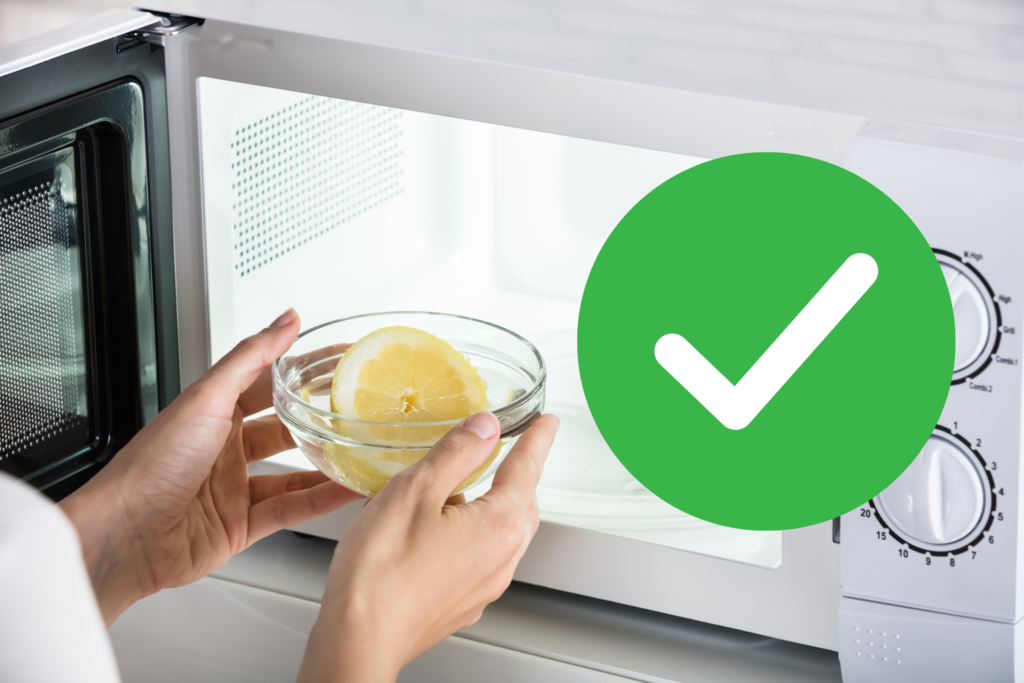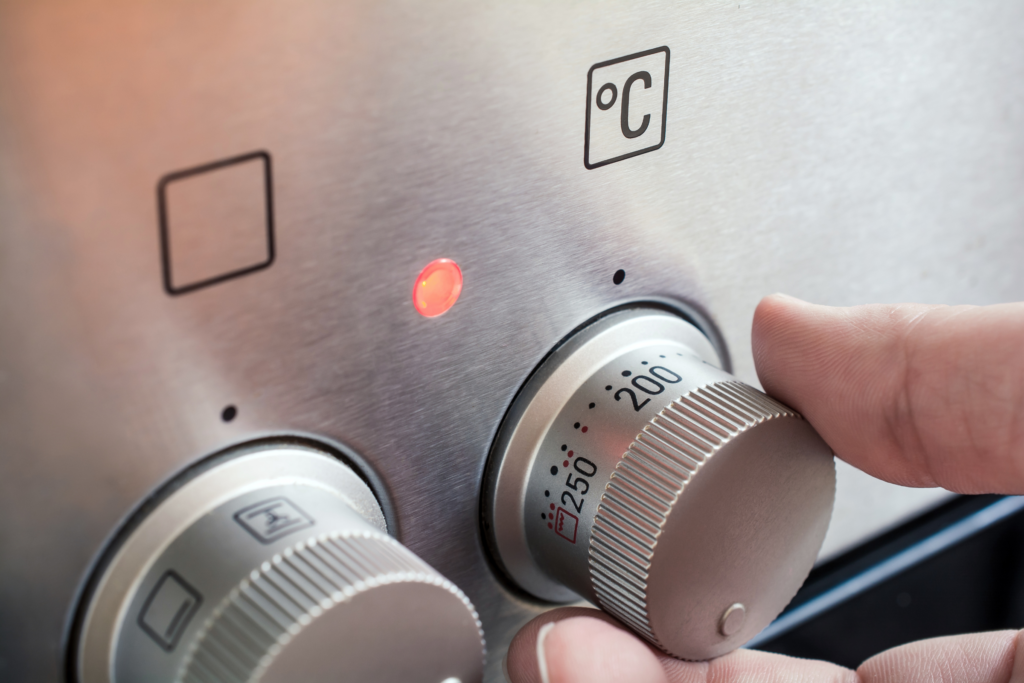Can You Microwave Pyrex? (And Pyrex Lids?)
Pyrex is a step up from plastic Tupperware. It’s dishwasher safe and can be used to cook, bake, or reheat food in microwaves and conventional ovens. It’s designed explicitly for oven use, but can you microwave Pyrex?
You can microwave Pyrex and use it in conventional and convection ovens. Pyrex stored in the freezer should be dethawed before it’s placed in a microwave or oven. The lids can be microwaved but are not oven-safe unless specifically stated on the Pyrex packaging.
In this article, we’ll discuss everything you need to know about Pyrex and how to safely store and reheat food in Pyrex containers based on my experience in the kitchen!
Is Pyrex microwave safe?
Pyrex is designed to be an all-in-one solution for food storage. You can store food, reheat it, and eat it directly inside the container.
Pyrex is safe for microwave ovens and conventional ovens. When compared to other brands, Pyrex is sturdy and thicker, making it durable. However, there are a few things that the manufacturer failed to reiterate on the official website. Such include the advantages and disadvantages of using Pyrex in the microwave.

When you first purchase the Pyrex glassware, you’ll find some information on the packaging that says Pyrex is safe for use in the microwave, toaster oven, conventional oven, and freezer. However, many users still raise complaints about cracks and explosions.
Usually, Pyrex is safe when used on one device; however, it’s not resistant when used from one device to another.
For example, Pyrex will explode when you put it directly into the microwave oven from the freezer. Glassware is prone to thermal shock.
So what happens when you put hot Pyrex into the freezer?
- There will be a sudden temperature change
- The glass is more likely to shatter
- It will crack
- You’ll be subjecting it to thermal shock
So you see, Pyrex is Microwave safe when proper precautions are observed.
Meanwhile, refrain from pouring hot liquids in cold Pyrex and vice versa. Also, avoid a drastic temperature change; instead, preheat Pyrex beforehand before tossing it into the microwave. This implies extreme temperatures anywhere from 100-120 degrees Celsius.
Can you microwave Pyrex lids?
Now that you know Pyrex glassware is microwave-safe (if you observe specific measures), it might also interest you to know about the lids. Can you microwave Pyrex with lids? Can Pyrex lids withstand high temperatures?
Pyrex glassware is microwave and dishwasher-safe, and the lids are heat-resistant. They can safely go into the microwave, oven, and dishwasher when measures are observed. Most importantly, you should avoid exposing Pyrex to thermal shock.
Additionally, you can use Pyrex lids for multiple functions. However, they are not applicable for use under the broiler or direct heat ( for example, stovetop burners). When used appropriately, Pyrex lids might work just fine for an extended period – whether on a microwave or stovetop.
What temperatures are safe for Pyrex?
Pyrex Temperature Capacity, however, this glassware can still accommodate extreme cold temperatures of up to -313 degrees Fahrenheit. And because it exhibits sturdy construction, Pyrex dishes can safely go into the oven, refrigerator, or freezer.
The maximum temperature of Pyrex bakeware is 450 degrees Fahrenheit. However, when increased beyond that, they are more likely to shatter. Even though Pyrex includes a label that indicates bakeware is safe for the oven and freezer, it would be best to avoid extreme temperature changes over time.

Can Pyrex go from the freezer to the microwave?
No. Like any glassware, Pyrex is prone to thermal shock. If the glass has been in the freezer, it’s recommended to leave it at room temperature beforehand. If not, the glass will either crack or explode, depending on the cold intensity when transferred into the microwave. Meanwhile, you can microwave a glass that was recently put in the fridge.
Thermal shock is often a result of stress produced in a body or material after a sudden temperature change. And that’s precisely what happens when you expose Pyrex glass to sudden temperature change.
When you rapidly heat or cool a Pyrex glass, different glass parts expand or contract differently, thus stress. Sadly, the glass will shatter or even explode if the pressure is too extreme for the structure.
Fortunately, you can prevent the stress effect by observing how fast you adjust the temperatures of Pyrex. Transferring a glass directly from the freezer into a hot oven might also influence the breakage.
Recently, the Pyrex brand changed its manufacturer, which means that Pyrex is no longer made of the same material. However, its official website does not mention that. They still claim the Pyrex glassware can safely go from a freezer to a microwave, or convection, or a preheated conventional oven.
And because it’s no longer made of the same thermal shock-resistant material, it would be best to handle it with extra care. Avoid placing it on a stovetop. Also, do not expose it to sudden temperature changes, regardless of what the manufacturers say. In short, one should handle Pyrex glassware just like any other glass.
Are all Pyrex dishes microwave-safe?
Yes, Pyrex dishes are safe for the microwave, including bowls, casserole dishes, baking dishes, and plates.
Originally, Pyrex dishes were made of borosilicate glass – a material resistant to thermal shock. The current process uses soda-lime glass, presumably a budget-cutting measure, as soda-lime tends to be cheap. And because the current manufacturer is different, Pyrex is more of a brand name than a material.
Pyrex mentions no change in materials on its official website, let alone the type of materials used in its products. Pyrex glassware is oven-safe, microwave-safe, and freezer safe. However, the durability probably isn’t what it used to be.
Pyrex kitchenware no longer features thermal shock-resistant glass, and as such, you should be extra careful when handling it. Avoid exposing it to sudden temperature change and placing it on a stovetop. In its current modification, Pyrex should be treated just like any other glass.
Again, refrain from pouring cold liquids into hot glassware and vice versa. Do not use a wet piece of cloth when handling hot glassware; instead, use oven mitts. Place hot glassware on a cooling rack or a dry cloth and let cool. Before you can refrigerate or freeze glassware, ensure that it has cooled adequately to prevent thermal shock or, even worse, breakage.
Preheat your oven before placing glassware. Also, avoid using glassware under a flame or broiler as it may crack. If you want to cook foods that may release steam, consider adding a small amount of liquid to the dish’s bottom.
Above all, you should avoid microwave misuses such as microwaving popcorn, heating nearly empty glassware, and overheating. In case of breakage, handle the broken pieces with extra care to prevent injuries. Failure to manage your glassware with proper care will mean breakage, cracking, chipping, or scratching.
Which Pyrex dish is the best for microwaving?
Preferences vary across users’ tastes and cooking methods. Some people perceive bowls to be better than dishes and cups. Even so, a typical Pyrex dish is the most preferred for microwaving. It features a handle for easy accessibility when the food is ready.
Additionally, a Pyrex glass dish is a good bet if your recipe requires microwave interruptions, such as adding ingredients or even stirring in the middle of cooking. You can easily take it out and do it as per your recipe instructions.
While there are no restrictions to using a specific type of glassware, there are many glasswares you can try for different recipes. However, the Pyrex glass jar still stands out from many other types.
As for any microwave mug recipe, the Pyrex jug can work perfectly well. With this Pyrex jug, you can try nearly all microwave recipes. Meanwhile, Pyrex glassware is available in different sizes and shapes:
- 0.25-liter jugs are ideal for cupcakes or cheesecakes
- 0.5-liter dishes are excellent for soups and porridges
- 1-liter bowls are convenient for microwaving yogurt, broth, or vegetables
How do you stop Pyrex from exploding?
As with any other glassware, a certain degree of care must be observed, especially when handling foods that require high temperatures. Three primary risks come along with glassware when used for cooking.
First, your glassware is more likely to break when exposed to a sudden change in temperature. Second, your glassware will break if banged or knocked against a hard object. Finally, you might get burnt when handling hot bakeware.
Additionally, Pyrex will expand or contract differently when heated or cooled rapidly. Not only that, but the glass might also fail due to the stress effect that is a result of shattering.
Meanwhile, follow the safety tips below to prevent personal injuries or glassware damage caused by thermal shock or extreme stress.
- Don’t place a hot glass dish directly on your stovetop: Although stovetops are heat resistant, putting hot glassware on a cold surface will result in shattering. Instead, place a hot glass dish on a potholder, cooling rack, a dry cloth, or a hot cloth pad to avoid thermal shock.
- Don’t cook a dry dish in a glass pan: Always avoid cooking dry foods on glassware. Alternatively, add a small amount of water or oil to protect the bottom of the glass. Often, this applies to cooking foods that release steam. The point is to avoid thermal shock due to rapid temperature changes. Adding some liquid beforehand will prevent room or cold-temperature liquids from posing a negative impact.
- Ensure all clothes or oven mitts are dry before using them to handle hot glassware: While this sounds ironic, wet clothes are good heat conductors. They quickly get hot, burning your hands.
- Use oven mitts to handle hot pans: Always put on oven mitts when handling hot cookware. Hot cookware can burn your skin; be careful when you’re moving hot pans around the kitchen.
- Don’t use glass cookware to reheat dry foods in the microwave: Again, consider a small amount of water to cover the bottom before you can start cooking. Essentially, this prevents sudden temperature changes that could lead to breakage.
- Don’t use glass cookware for cooking dishes that require high heating: This involves cooking on direct flames such as stove tops, broilers, grills, and toaster ovens. Unless the glassware is intended for that specific purpose, please do not use it under high heat.
- Consider cooling time factor: This is especially true when you plan to scoop your dinner using a metal spoon. Be patient enough to allow the glass to cool for a few minutes before scooping it up with the room-temperature metal spoon.
Let Us Know How We’re Doing!
Did this expertly prepared resource answer your question?
Do you have another question about home maintenance, home improvement projects, home appliance repair, or something else?
Get more information, send in questions and keep the discussion going by contacting the I’ll Just Fix It Myself company customer service team at at 1-800-928-1490 or Email us at [email protected]
